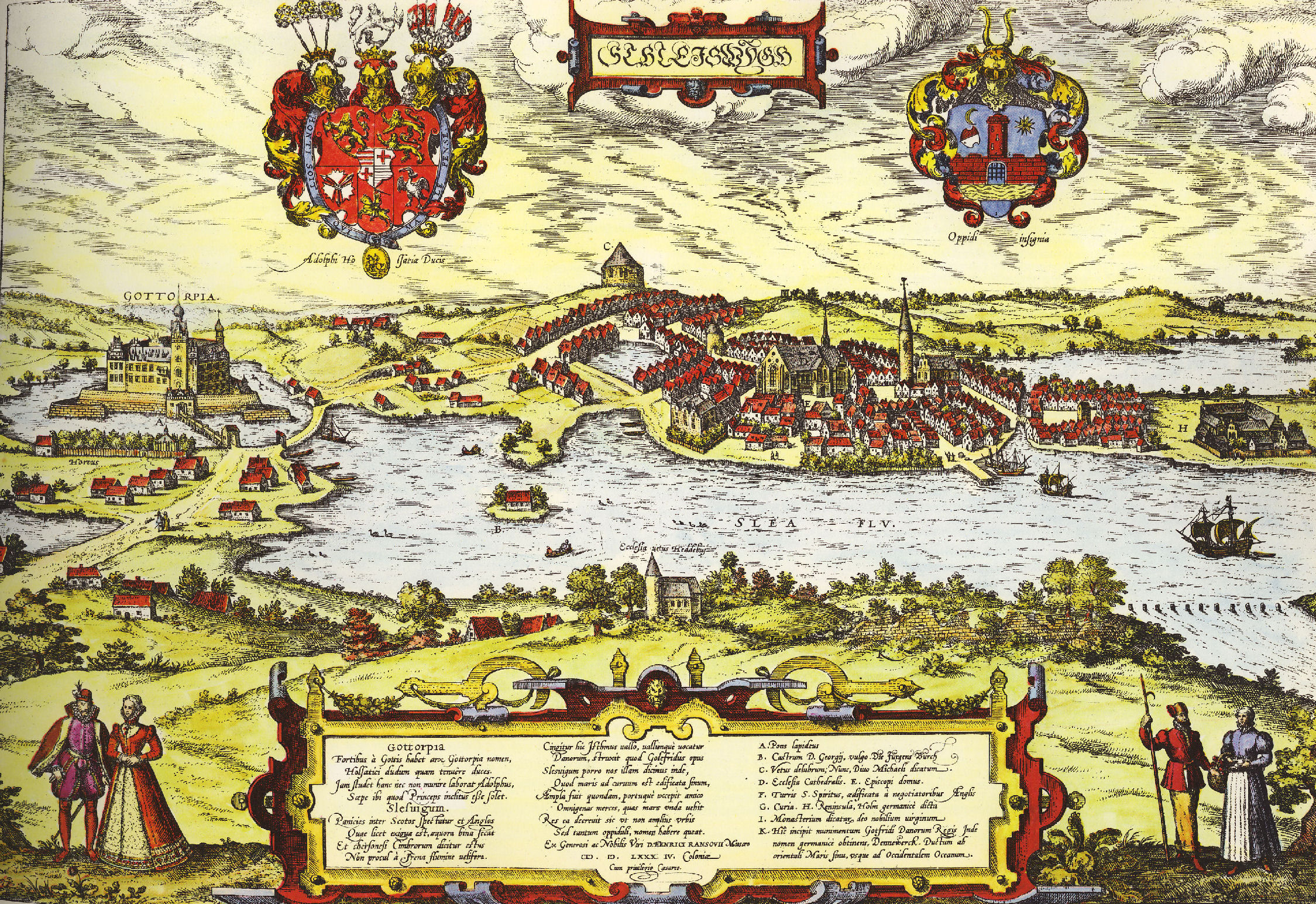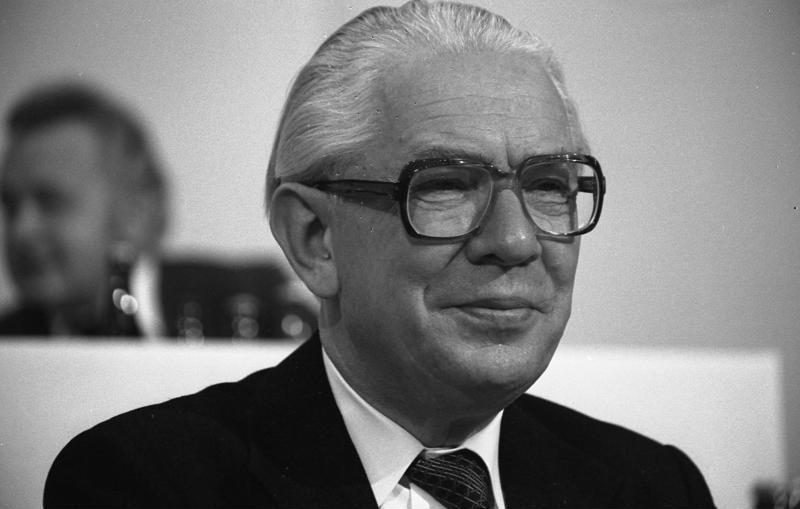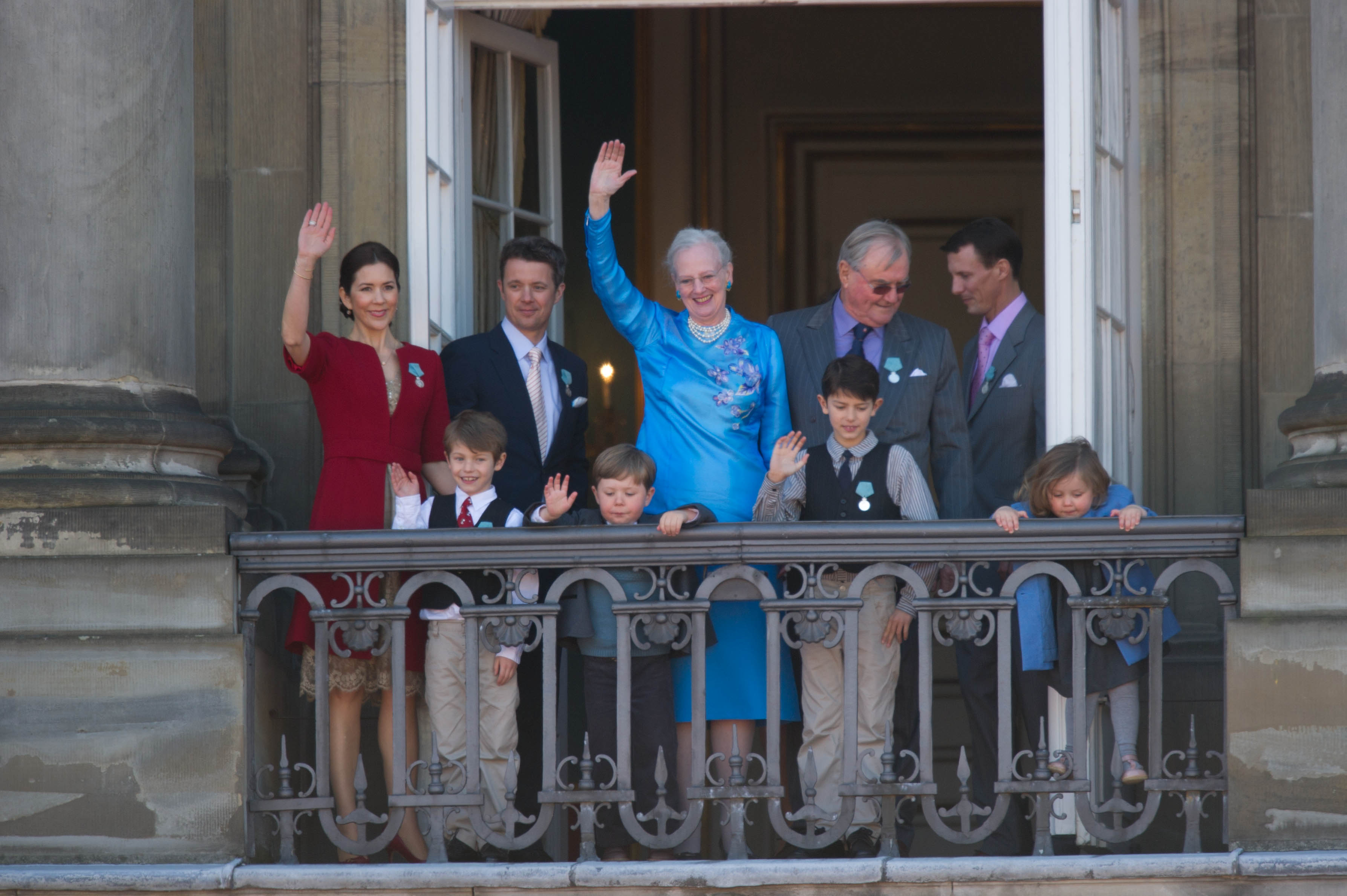|
Friedrich Wilhelm, Duke Of Schleswig-Holstein-Sonderburg-Glücksburg
Friedrich Wilhelm, Duke of Schleswig-Holstein-Sonderburg-Glücksburg (german: Friedrich Wilhelm Paul Leopold; 4 January 1785 – 17 February 1831) inherited the title of Duke of Schleswig-Holstein-Sonderburg-Beck as Frederick William IV in 1816. He subsequently changed his title to Duke of Schleswig-Holstein-Sonderburg-Glücksburg in 1825 and founded a line that includes the Royal Houses of Denmark, Greece, Norway, and the Commonwealth realms. Early life Friedrich Wilhelm was born in Lindenau, near Königsberg, East Prussia, to Friedrich Karl Ludwig, Duke of Schleswig-Holstein-Sonderburg-Beck (20 August 1757 – 24 April 1816) and Countess Friederike of Schlieben (28 February 1757 – 17 December 1827). He was the third and youngest child of the couple, and the only son. In 1804, he was sent to Denmark, where he was an officer of the Danish army during the Napoleonic Wars. Marriage and issue On 26 January 1810, Friedrich Wilhelm married his relative Princess Louise Caroline ... [...More Info...] [...Related Items...] OR: [Wikipedia] [Google] [Baidu] |
Duke Of Schleswig-Holstein-Sonderburg-Glücksburg
Duke is a male title either of a monarch ruling over a duchy, or of a member of royalty, or nobility. As rulers, dukes are ranked below emperors, kings, grand princes, grand dukes, and sovereign princes. As royalty or nobility, they are ranked below princess nobility and grand dukes. The title comes from French ''duc'', itself from the Latin ''dux'', 'leader', a term used in Roman Republic, republican Rome to refer to a military commander without an official rank (particularly one of Germanic peoples, Germanic or Celts, Celtic origin), and later coming to mean the leading military commander of a province. In most countries, the word ''duchess'' is the female equivalent. Following the reforms of the emperor Diocletian (which separated the civilian and military administrations of the Roman provinces), a ''dux'' became the military commander in each province. The title ''dux'', Hellenised to ''doux'', survived in the Eastern Roman Empire where it continued in several contexts, si ... [...More Info...] [...Related Items...] OR: [Wikipedia] [Google] [Baidu] |
Schleswig, Schleswig-Holstein
Schleswig (, , ; da, Slesvig; South Jutlandic: ''Sljasvig''; nds, Sleswig; archaic English: ''Sleswick'') is a town in the northeastern part of Schleswig-Holstein, Germany. It is the capital of the '' Kreis'' (district) Schleswig-Flensburg. It has a population of about 27,000, the main industries being leather and food processing. It takes its name from the Schlei, an inlet of the Baltic sea at the end of which it sits, and ''vik'' or ''vig'' which means "bay" in Old Norse and Danish. Schleswig or Slesvig therefore means "bay of the Schlei". History The Viking settlement of Hedeby, located south of the modern town, was first mentioned in 804. It was a powerful settlement in the Baltic region, dominating the area for more than 200 years. In 1050, following several destructions, the population was moved to the opposite shore of the Schlei, becoming the city of Schleswig. In 1066 Hedeby was finally destroyed, and Schleswig remained as a part of the Danish kingdom. In 1544, Gottor ... [...More Info...] [...Related Items...] OR: [Wikipedia] [Google] [Baidu] |
Gottorp
Gottorf Castle (german: Schloss Gottorf, da, Gottorp Slot, Low German: ''Gottorp'') is a castle and estate in the city of Schleswig, Schleswig-Holstein, Germany. It is one of the most important secular buildings in Schleswig-Holstein, and has been rebuilt and expanded several times in its over eight hundred years of history, changing from a medieval castle to a Renaissance fortress to a Baroque castle.Dehio: Handbuch der Deutschen Kunstdenkmäler. Hamburg, Schleswig-Holstein, p. 800. (German text) It is the ancestral home of the Holstein-Gottorp branch of the House of Oldenburg, from which emerged in the 18th century, among other things, four Swedish kings and several Russian Emperors. It is situated on an island in the Schlei, about 40 km from the Baltic Sea. History It was first settled as an estate in 1161 as the residence of Bishop Occo of Schleswig when his former residence was destroyed. The Danish Duke of Schleswig acquired it through a purchase in 1268, and i ... [...More Info...] [...Related Items...] OR: [Wikipedia] [Google] [Baidu] |
Schleswig-Holstein-Sonderburg-Glücksburg (elder Line)
Schleswig-Holstein-Sonderburg-Glücksburg was a line of the house of Schleswig-Holstein-Sonderburg, a cadet branch of the House of Oldenburg, from 1622 to 1779. History The line was founded by the partitioned-off duke Philip of Schleswig-Holstein-Sonderburg-Glücksburg (1584–1663). The line was named after Glücksburg Castle, where he had his headquarters. Members of this line bore the title of ''Duke of Schleswig-Holstein-Sonderburg-Glücksburg''. However, they had limited powers in ruling their territory, since it was not an estate of the Realm, but a fief of the Duchy of Holstein-Gottorp. Later, the family gave up these rights altogether and continued as titular dukes. Some years after the death of the last duke, Frederick Henry William (1747–1779), the title went via King Frederick VI to Frederick William of Schleswig-Holstein-Sonderburg-Beck, who founded the younger line of Schleswig-Holstein-Sonderburg-Glücksburg in 1825. Dukes See also * Schleswig-Holst ... [...More Info...] [...Related Items...] OR: [Wikipedia] [Google] [Baidu] |
Glücksburg
Glücksburg (; da, Lyksborg) is a small town northeast of Flensburg in the district Schleswig-Flensburg, in Schleswig-Holstein, Germany and is the northernmost town in Germany. It is situated on the south side of the Flensborg Fjord, an inlet of the Baltic Sea, approx. 10 km northeast of Flensburg. The town was originally the home of the family '' Schleswig-Holstein-Sonderburg-Glücksburg'' (or simply ''Glücksburg''), members of which have reigned in the past in Greece and several northern German states. Members of the family still reign in Denmark and Norway since 1863 and 1905 respectively. Glücksburg was home to a German Navy base. Among the facilities at the base is the transmitter, callsign DHJ58. DHJ58, situated at 54° 50'N and 9° 32' E, ceased its transmissions on longwave frequency 68.9 kHz in 2002 and in 2004 its longwave antenna was disassembled. Notable people * Kai-Uwe von Hassel (1913-1997), politician (CDU), was mayor of Glücksburg, Minister President ... [...More Info...] [...Related Items...] OR: [Wikipedia] [Google] [Baidu] |
Princess Louise Of Denmark (1750–1831)
Princess Louise of Denmark and Norway ( da, Louise af Danmark; no, Louise av Danmark) (20 January 1750 – 12 January 1831) was born to Frederick V of Denmark and Louise of Great Britain. Her eldest daughter, Marie of Hesse-Kassel, was the wife of Frederick VI of Denmark. Life Early life Princess Louise was born on 20 January 1750 at Christiansborg Palace, the principal residence of the Danish Monarchy in central Copenhagen. She was a daughter to Frederick V, King of Denmark and Norway, and his first wife Louise of Great Britain. At birth, Louise had two older sisters, Princess Sophia Magdalena and Princess Wilhelmina Caroline, and an older brother Crown Prince Christian. In 1751, one year after Louise's birth, her mother Queen Louise died during her sixth pregnancy, just aged 27 years. The following year her father remarried to Duchess Juliana Maria of Brunswick-Wolfenbüttel, who gave birth to Louise's half-brother, Prince Frederick in 1753. Princess Louise was consi ... [...More Info...] [...Related Items...] OR: [Wikipedia] [Google] [Baidu] |
Frederik V Of Denmark
Frederick V ( Danish and Norwegian: ''Frederik V''; 31 March 1723 – 14 January 1766) was King of Denmark–Norway and Duke of Schleswig-Holstein from 6 August 1746 until his death in 1766. He was the son of Christian VI of Denmark and Sophie Magdalene of Brandenburg-Kulmbach. Although the personal influence of Frederick was limited, his reign was marked by the progress of commerce and trade, and art and science prospered under his reign. Unlike his parents who were deeply devoted to Pietism, Frederick grew into a hedonist. As regent, he took part in the conduct of government by attending council meetings, but he was afflicted by alcoholism and most of his rule was dominated by able ministers who were influenced by the ideas of the Age of Enlightenment. His ministers marked his reign by the progress of commerce and the emerging industry. They also avoided involving Denmark-Norway in the European wars of his time. Although Frederick V wasn't personally interested in cultural a ... [...More Info...] [...Related Items...] OR: [Wikipedia] [Google] [Baidu] |
Napoleonic Wars
The Napoleonic Wars (1803–1815) were a series of major global conflicts pitting the French Empire and its allies, led by Napoleon I, against a fluctuating array of European states formed into various coalitions. It produced a period of French domination over most of continental Europe. The wars stemmed from the unresolved disputes associated with the French Revolution and the French Revolutionary Wars consisting of the War of the First Coalition (1792–1797) and the War of the Second Coalition (1798–1802). The Napoleonic Wars are often described as five conflicts, each termed after the coalition that fought Napoleon: the Third Coalition (1803–1806), the Fourth (1806–1807), the Fifth (1809), the Sixth (1813–1814), and the Seventh (1815) plus the Peninsular War (1807–1814) and the French invasion of Russia (1812). Napoleon, upon ascending to First Consul of France in 1799, had inherited a republic in chaos; he subsequently created a state with stable financ ... [...More Info...] [...Related Items...] OR: [Wikipedia] [Google] [Baidu] |
Commonwealth Realm
A Commonwealth realm is a sovereign state in the Commonwealth of Nations whose monarch and head of state is shared among the other realms. Each realm functions as an independent state, equal with the other realms and nations of the Commonwealth. King Charles III succeeded his mother, Queen Elizabeth II, as monarch of each Commonwealth realm following her death on 8 September 2022. He simultaneously became Head of the Commonwealth. there are 15 Commonwealth realms: Antigua and Barbuda, Australia, The Bahamas, Belize, Canada, Grenada, Jamaica, New Zealand, Papua New Guinea, Saint Kitts and Nevis, Saint Lucia, Saint Vincent and the Grenadines, Solomon Islands, Tuvalu, and the United Kingdom. All are members of the Commonwealth, an intergovernmental organisation of 56 independent member states, 52 of which were formerly part of the British Empire. All Commonwealth members are independent sovereign states, regardless of whether they are Commonwealth realms. At her accession i ... [...More Info...] [...Related Items...] OR: [Wikipedia] [Google] [Baidu] |
Royal House Of The Hellenes
The Kingdom of Greece ( grc, label=Greek, Βασίλειον τῆς Ἑλλάδος ) was established in 1832 and was the successor state to the First Hellenic Republic. It was internationally recognised by the Treaty of Constantinople, where Greece also secured its full independence from the Ottoman Empire after nearly four centuries. The Kingdom of Greece was dissolved in 1924 and the Second Hellenic Republic was established following Greece's defeat by Turkey in the Asia Minor Campaign. A military ''coup d'état'' restored the monarchy in 1935 and Greece became a Kingdom again until 1973. The Kingdom was finally dissolved in the aftermath of a seven-year military dictatorship (1967–1974) and the Third Hellenic Republic was established following a referendum held in 1974. Background The Greek-speaking Eastern Roman Empire, also known as Byzantine Empire, which ruled most of the Eastern Mediterranean region for over 1100 years, had been fatally weakened since the sackin ... [...More Info...] [...Related Items...] OR: [Wikipedia] [Google] [Baidu] |
Royal House Of Denmark
The Danish royal family is the dynastic family of the monarch. All members of the Danish royal family except Queen Margrethe II hold the title of ''Prince/Princess of Denmark''. Dynastic children of the monarch and of the heir apparent are accorded the style of ''His/Her Royal Highness'', while other members of the dynasty are addressed as ''His/Her Highness''. The Queen is styled ''Her Majesty''. The Queen, her siblings and her descendants belong to the House of Glücksburg, which is a branch of the Royal House of Oldenburg. The Queen's children and male-line descendants also belong agnatically to the family de Laborde de Monpezat, and were given the concurrent title ''Count/Countess of Monpezat'' by royal decree on 30 April 2008. The Danish royal family receives remarkably high approval ratings in Denmark, ranging between 82% and 92%. Main members The Danish royal family includes: * The Queen (the monarch) ** The Crown Prince and Crown Princess (the Queen's son and daughter ... [...More Info...] [...Related Items...] OR: [Wikipedia] [Google] [Baidu] |





